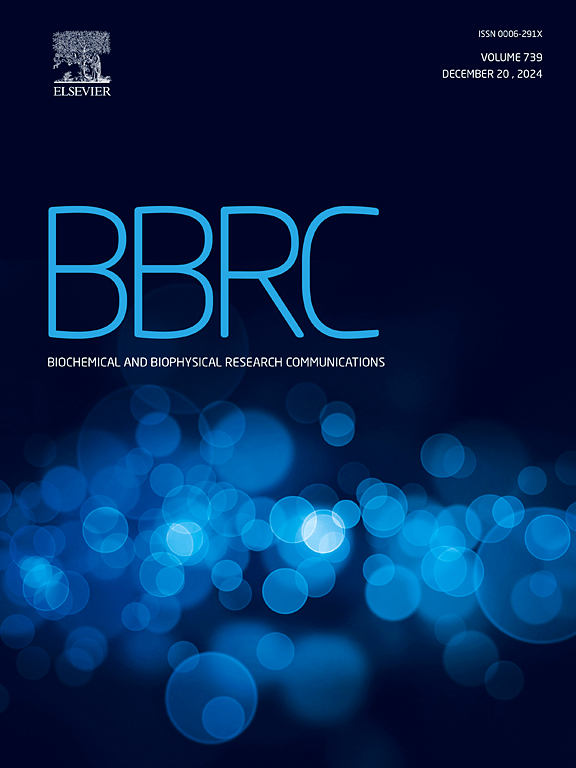Development of HiBiT-tagged mumps virus-like particles assembled from authentic viral structural proteins for neutralizing testing
IF 2.5
3区 生物学
Q3 BIOCHEMISTRY & MOLECULAR BIOLOGY
Biochemical and biophysical research communications
Pub Date : 2025-06-19
DOI:10.1016/j.bbrc.2025.152236
引用次数: 0
Abstract
Despite widespread vaccination programs, mumps outbreaks persist even in highly vaccinated populations, raising concerns about current vaccine effectiveness against circulating strains. Existing serological methods exhibit limitations in practical implementation and antigenic specificity. To address these challenges, we developed a rapid neutralization assay using HiBiT-tagged mumps virus-like particles (hiMuV-VLPs) composed entirely of authentic viral structural proteins. Transmission electron microscopy confirmed these hiMuV-VLPs morphologically resembled native mumps virions. The VLPs demonstrated efficient cellular entry, quantifiable via luminescent signals generated by HiBiT-LgBiT complementation. Validation against conventional plaque reduction neutralization tests (PRNT) using human sera revealed the biological relevance and practicability of our assay. A key innovation was the successful incorporation of hemagglutinin-neuraminidase (HN) proteins from multiple mumps virus genotypes into the hiMuV-VLP platform, enabling assessment of strain-specific neutralizing antibody responses. This system represents a valuable tool for large-scale seroepidemiological surveillance, evaluation of vaccine-induced immunity against heterologous strains, and prediction of population susceptibility to emerging mumps virus variants.

由真实病毒结构蛋白组装的用于中和试验的hibit标记腮腺炎病毒样颗粒的开发
尽管有广泛的疫苗接种计划,即使在高度接种疫苗的人群中,流行性腮腺炎的爆发也持续存在,这引起了人们对目前疫苗对流行毒株的有效性的担忧。现有的血清学方法在实际实施和抗原特异性方面存在局限性。为了解决这些挑战,我们开发了一种快速中和试验,使用完全由真实病毒结构蛋白组成的hibit标记的腮腺炎病毒样颗粒(hiMuV-VLPs)。透射电镜证实,这些hiuv - vlps在形态上与天然腮腺炎病毒粒子相似。VLPs显示出有效的细胞进入,通过HiBiT-LgBiT互补产生的发光信号可量化。利用人类血清对传统的斑块减少中和试验(PRNT)进行验证,揭示了我们的测定方法的生物学相关性和实用性。一个关键的创新是成功地将来自多种腮腺炎病毒基因型的血凝素-神经氨酸酶(HN)蛋白整合到hiMuV-VLP平台中,从而能够评估菌株特异性中和抗体反应。该系统是一种有价值的工具,可用于大规模血清流行病学监测,评估疫苗诱导的对异源株的免疫,以及预测人群对新发流行性腮腺炎病毒变体的易感性。
本文章由计算机程序翻译,如有差异,请以英文原文为准。
求助全文
约1分钟内获得全文
求助全文
来源期刊
CiteScore
6.10
自引率
0.00%
发文量
1400
审稿时长
14 days
期刊介绍:
Biochemical and Biophysical Research Communications is the premier international journal devoted to the very rapid dissemination of timely and significant experimental results in diverse fields of biological research. The development of the "Breakthroughs and Views" section brings the minireview format to the journal, and issues often contain collections of special interest manuscripts. BBRC is published weekly (52 issues/year).Research Areas now include: Biochemistry; biophysics; cell biology; developmental biology; immunology
; molecular biology; neurobiology; plant biology and proteomics

 求助内容:
求助内容: 应助结果提醒方式:
应助结果提醒方式:


